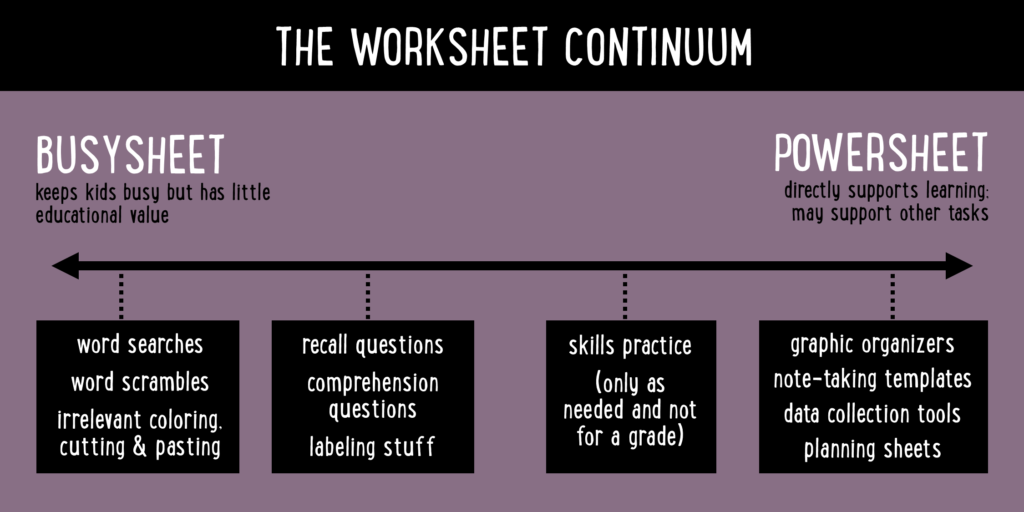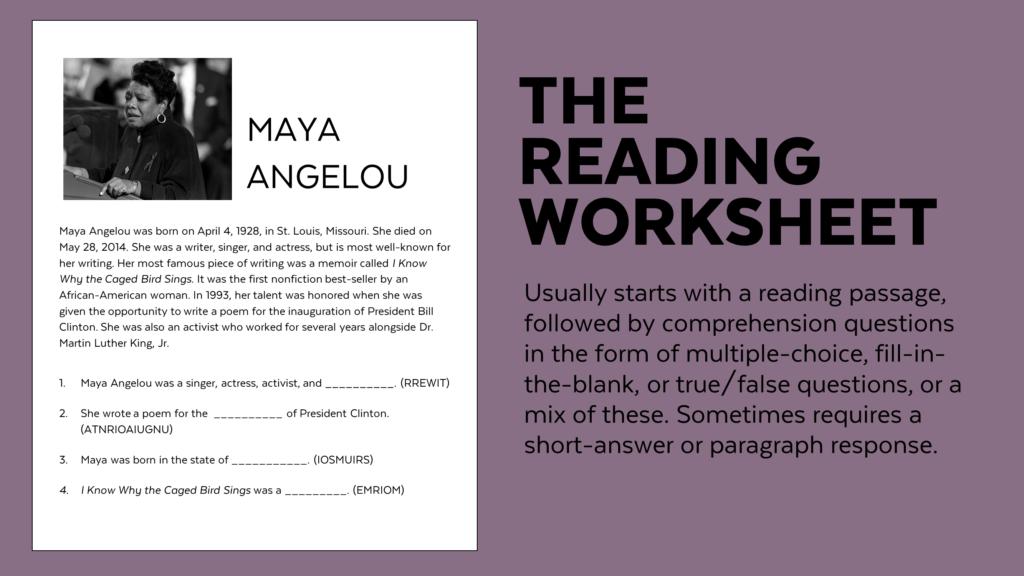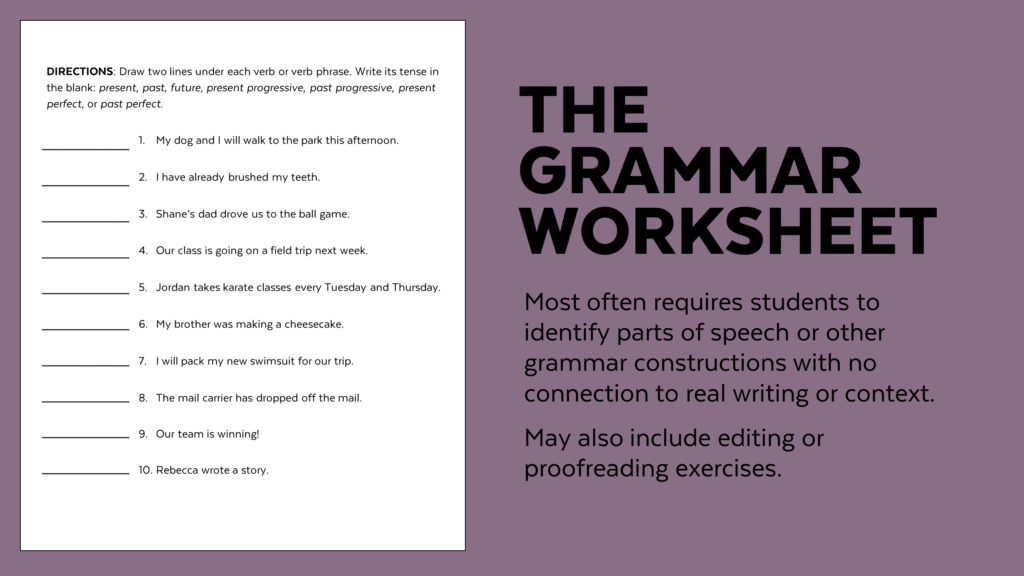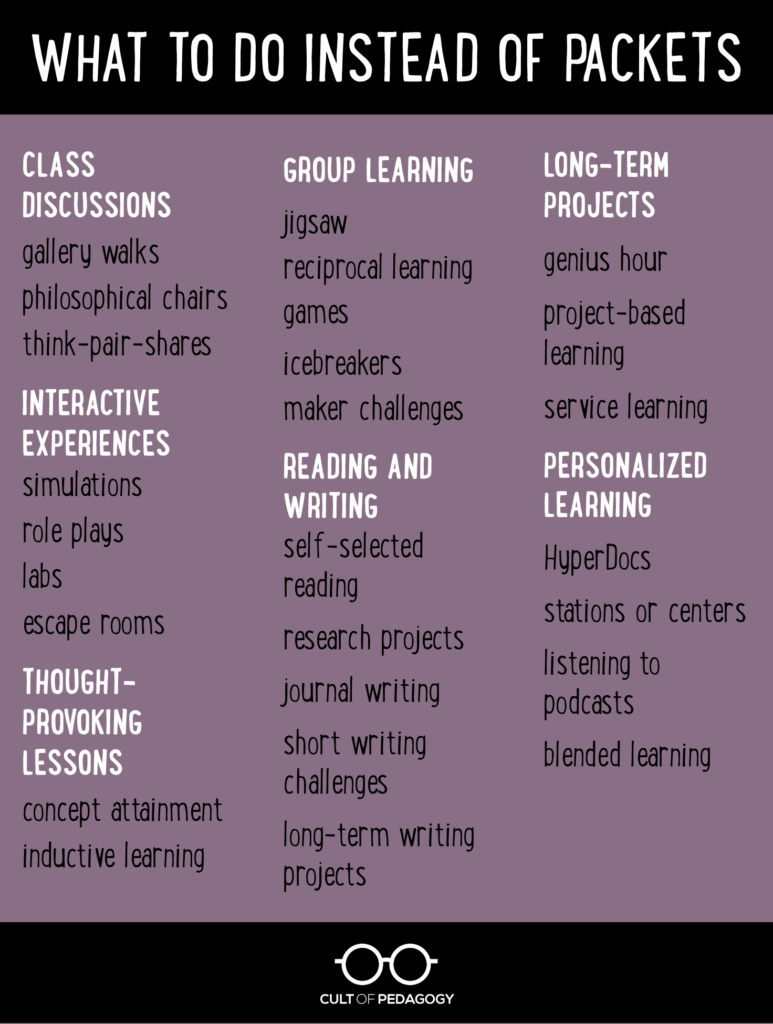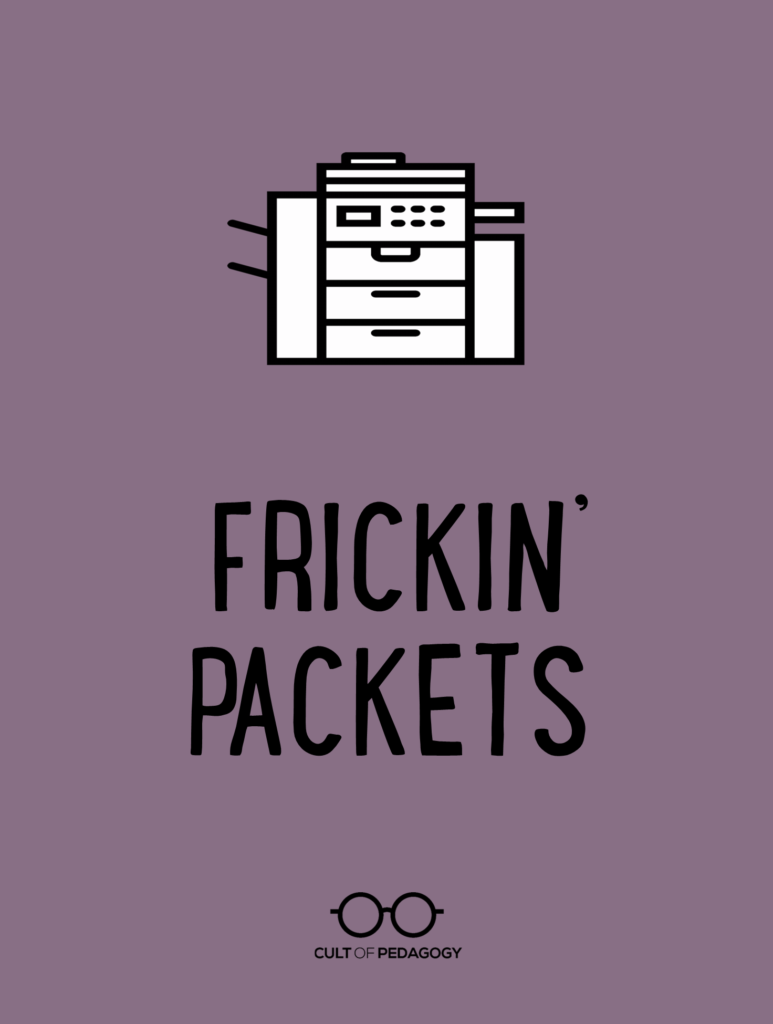
Listen to this post as a podcast:
Sponsored by Screencast-O-Matic and Microsoft Hacking STEM
I saw a video a few months ago that I haven’t been able to get out of my head. In the video, a high school student named Jeff Bliss stood up in the middle of class and basically expressed his frustration to the teacher in the room:
Okay, now let’s get something out of the way: Yes, this student was disrupting class and his behavior is disrespectful. I will acknowledge that. On the other hand, we don’t know exactly what happened before the camera was turned on. Based on what he says in the video, my guess is that Bliss had just voiced some kind of concern, the teacher told him to quit complaining, and at that point, I guess he’d had enough.
What I have gleaned about Jeff Bliss from the internet is that at the time of the video, he was an 18-year-old sophomore. So apparently, at some point, he had not been successful in school. For some people, this takes away his credibility. For me, it makes him an even better source of information about why school isn’t working for some students.
Disruptive behavior aside, the content of Bliss’s outburst tells me that his teacher’s primary mode of instruction is through packets. This was what got me. This is what made me watch this video six, seven, eight times over. Because I just believe him.
I believe him because I’ve seen it. I’ve seen classrooms where teachers deliver instruction overwhelmingly through worksheets, or packets of worksheets. I have seen my own kids’ schoolwork come home, and I have asked friends, other parents with school-age kids, and colleagues who consult in lots of schools, and nearly all of them tell me that a lot of our students’ instructional time is being spent hunched over some kind of worksheet.
That’s a problem.
I want to spend some time looking at this problem from all sides: What distinguishes a “busywork” worksheet from something that delivers real value, why teaching with worksheets is usually not the best choice for learning, the reasons teachers default to worksheet teaching, and what other learning experiences would be better for our students.
Not all Worksheets are Created Equal
Let’s start by agreeing on some terms.
First we need to define what we mean by “worksheet.” Technically, a worksheet is anything printed on copier paper and given to students to write on. And since you can print just about anything on a piece of paper, we really can’t say that worksheets per se are good or bad. That would be like saying “books” or “movies” are good or bad. It’s a medium. A delivery system.
And there are plenty of instructionally rich things you can do with a worksheet: A graphic organizer is a wonderful tool for research, pre-writing, and notetaking. An excerpt from a primary source can be printed on a worksheet for close study and annotation. Worksheets can be used for analyzing data (like this collection from Maria Andersen), as scaffolds for notetaking, as tools for reflection, or as formative assessments. They can also be used as recording tools alongside more active experiences: data sheets for labs, planning sheets for group projects, and so on.
In my experience, when people criticize worksheets, they are referring to a specific type of worksheet, what I will call a busysheet, the kind where students are either doing work that’s fairly low-level recall stuff–filling in blanks with words, choosing from multiple-choice questions, labeling things–or work that has no educational value at all, like word searches, word scrambles, or coloring stuff in cases where coloring adds no extra layer of understanding.
Sometimes the difference between a busysheet and a quality learning tool is obvious, and other times it’s a judgment call. After talking to lots of educators about how they use worksheets in their classrooms, I think it’s most accurate to say that every worksheet falls somewhere on a continuum: Some worksheets are clearly nothing but busysheets, while others, like note-taking sheets or data collection tools, directly support student learning; I’ll call these powersheets. I think a lot of worksheets fall somewhere between the two. Because there is such a range, the only person who can really make the call is you.
Packets, to be clear, are simply a bunch of worksheets stapled together. They could contain a lot of powersheets, but when a student refers to them as frickin’ packets, it’s highly likely that they are mostly made up of busysheets.
Possible Busysheets in Disguise
Some formats have come along recently that have the potential to deliver the same kind of work we find in busysheets, only they don’t always look like it. While each of these certainly could offer instructional value, they could also be just another way to keep kids still:
- Computer programs or apps that have students performing the exact same activities we see on busysheets.
- Interactive notebooks: These vary widely in quality, with some offering true interactivity and others just offering the same value of a worksheet, just colored, cut, and pasted into a notebook.
- HyperDocs: If these are thoughtfully designed, they have the potential to offer wonderful variety, exploration, and differentiation, but they could also just be a new way to organize busywork.
The Problem with “Busysheet Teaching”
“Busysheet teaching” is when we use busysheets in place of other, better forms of instruction. This type of teaching might take the form of bell-ringers, homework, early finisher work, classroom centers, or even the main learning activity during regular class time.
So what’s wrong with teaching this way?
It’s disconnected from anything meaningful.
Busysheets isolate skills so much that students have trouble connecting them to real life. When a student sees little value in an activity, he is not truly engaged. Take this reading worksheet, which has students read a short passage about Maya Angelou, then answer four fill-in-the-blank questions about the passage.
This type of busysheet would most likely be used to teach reading comprehension or serve as a Black History Month activity.
Let’s unpack these one by one.
- Reading comprehension: Having students answer low-level recall questions about a passage of writing that offers no meaningful context doesn’t do a lot to make them better readers. If the questions were more challenging, if they asked students to choose which textual evidence supports some particular idea, for example, that might move it up the continuum a bit more toward the power end, but is this the best way to give students reading practice? If students do this kind of work day after day, with passages instead of real books, they won’t be reading enough. So much of what we call “reading instruction” is far inferior to having students read real books.
- Black History Month: Giving students a packet of these types of busysheets–where the work and contributions of significant African Americans are reduced to one-page blurbs followed by some cute activity–is inadequate in so many ways. This article from Teaching Tolerance lists much more comprehensive and authentic ways to honor Black history in your classroom all year round.
It often misses the standards.
Even if they are labeled as addressing certain standards, the kind of work we see on busysheets often misses the mark. Take, for example, this typical grammar worksheet:
This type of worksheet, where students are asked to label or identify various grammatical constructions, has thrived for decades, and in the days before worksheets, it existed in the form of exercises from grammar books.
Apart from the well-established fact that teaching grammar outside the context of meaningful writing does nothing to help students become better writers, and in many cases makes them worse, the skills being practiced in this kind of worksheet don’t actually teach or reinforce the goals set by our academic standards.
Here’s what I mean: For convenience, I’ll use the Common Core Standards as a reference. There is no mention anywhere in the standards of students being able to identify or label these verb tenses. Nothing. It does, however, require students to use them correctly in their writing. So it would make a lot more sense to show students these different constructions, then have them find places in their writing where they are using them. If they aren’t using them anywhere, have them try it. They never ever have to actually know the names of the verb tenses or a whole lot of other grammatical constructions. Despite this, tens of thousands of students are required to complete busysheets like this every day. And I bet they get tested on the same kind of information, too. Meanwhile, little to no time is being spent giving them opportunities to use these constructions in their real writing.
It often has no instructional value.
By definition, a busysheet’s goal is to keep students busy, not necessarily teach them anything. The most egregious types of busysheets are word searches, word scrambles, and and crossword puzzles, which might as well be a list of definitions with blanks next to them.
I have watched my own children do word searches for homework and stress out about not finding every single word because they would lose points. If there is any pedagogical justification for that, I certainly haven’t found it.
It requires lots and lots of sitting still.
The more teachers use busysheets, the more students will sit and sit and sit. Yes, it’s possible that there are teachers who use a lot of busysheets but have great alternative seating options in their classrooms, but my guess is that in most of the classrooms where busysheets are abundant, students are basically sitting in desks. This is far from ideal. In 2014, teacher Alexis Wiggins spent two days shadowing her students and was shocked to discover just how much time they spent sitting, and how exhausting that was. And we hear all the time about the studies that are confirming how dangerous it can be to sit for extended periods of time. So planning for extended periods of sitting, all day long, just isn’t good for our kids.
It requires a ton of copying.
Anyone who has ever had to wait in line for a copy machine or found themselves staring desperately at a cryptic error message on the copier knows that relying heavily on worksheets wastes a lot of time and paper.
It gives you more stuff to grade.
Many teachers who use a lot of worksheets also grade them, calculating those points as part of a student’s overall grade in a course. This approach creates two problems. One, it erases the value of formative assessment: If worksheets are meant to be used to teach students something or give them practice on skills they are learning, then why would students be penalized for making mistakes on them? I can see why teachers might give points for completion, but going through and marking wrong answers, then taking off points for something students are still actively learning is really missing the point: That’s what summative assessments are for. The other problem is that this system creates a ridiculous amount of grading for the teacher. If you are going home with piles and piles of papers to grade, you’re assigning too many things to be graded. If you can shift some of these activities from graded to “practice,” you’ll be giving students the practice they need without creating a lot of extra paperwork for yourself.
Why We Do It, and What to Do Instead
Teachers have a lot of reasons for leaning heavily on busysheets, and some of these may seem unavoidable. Let’s look at the most common reasons, along with some ideas for what we can do instead.
1. No Textbooks, No Tech
If your school is short on materials and technology, it may be necessary to use printables to build your curriculum. Much of what we learn comes from reading things, so if you don’t have good science textbooks, for example, worksheets and handouts can serve the same purpose. What’s important is that we do this thoughtfully.
- Even if you download a whole unit or curriculum, only use the parts that are going to provide value to your students, rather than just marching students through the whole thing.
- Beware of cute: Some materials are so beautifully designed, they may make it hard to notice if they’re thin on quality learning. If you can get both at once, awesome, but always scrutinize for the learning first.
- Not all students need the same materials: Consider making some handouts and worksheets available to students as resources, rather than giving everyone the same stuff. Show them how to select the materials they need and where to store them for future reference.
2. Skills Practice
Many teachers use worksheets to give students practice in required skills. This seems to be most common in math (or, in the later grades, with things like chemistry equations). While this method obviously gives teachers some of the results they’re hoping for, if you take a few things into consideration, you can probably refine the practice. Here are some questions to consider when heading to the copy machine:
- How much practice is really needed? Does every student need the same amount of practice? Can they stop when they’ve had enough?
- Would other activities be just as beneficial–or more beneficial–than practice problems? In this youcubed article, professor Jo Boaler describes four other ways to develop number facts and number sense. She also shared a strategy in a recent tweet where a problem is placed in the center of a paper and students use the corners of the page to show four different ways of solving the problem. These kinds of activities get kids to actually think and talk about the math they’re doing, rather than just completing problem after problem.
- I’m going to bring this up again: If you’re recording a grade on practice work, especially if that grade is based on accuracy, it’s not practice!! Keep this in mind when deciding how many problems are really necessary to give students the practice they need.
3. Differentiation
Teachers often find that creating leveled packets of work is a simple way to personalize learning for each student. But again, does that have to mean each child gets one of three large, comprehensive packets? Let’s look again at the suggestion I made earlier, where handouts (containing information) and worksheets (offering practice) are offered as resources, and students decide which they need. To see this idea fully developed, check out Natalie McCutchen’s self-paced math classroom: Students work through units on their own, and they decide how much practice they need before taking the assessments, so some students do a lot, while others do very little.
4. Grade-level Alignment
In some schools, teachers are required to teach the same thing as their grade-level counterparts, on the same day, and document the whole process in detailed, standards-aligned lesson plans. When I talk to teachers about why they’re burned out, it’s policies like these that they often cite as completely draining them. This type of requirement also causes many of them to resort to teaching entirely with packets: Find a workbook that says it’s standards-aligned, then everyone use the same set of pages every week. Done.
This makes for incredibly dry, uninspired learning, and unfortunately, I don’t have a good solution for it. My best advice is to share this post with your administrator so they can see the impact that this type of policy is having. I would also urge you to question the integrity of the standards label: Is the packet really getting kids to do what the standard says, or is it a “lighter” version of that? These packets may act as a stopgap for now, but if your team has been using the same set for several years, now may be the time to look more closely at them to see if some pages could be removed and replaced with other activities.
5. Sub Work
When we have substitute teachers, sometimes packets seem to be the only option. This is another tricky one. If you really have no other option, at least do everything you can to make sure the worksheets lean more toward the “powersheet” end of the continuum. Another option that can work if you know you’re going to be out ahead of time is to train a few students to lead the class in an actual lesson, then let the sub know that the plan is to let these students teach. This would obviously require a lot of work up front, and you need to have built a classroom culture where students want to behave while you’re gone, but I do think it can be done.
6. Crowd Control
In overcrowded classrooms it seems impossible to do anything hands-on, any kind of group work, anything interactive. Worksheets keep everyone in their seat and under control. This, again, is more of a systemic issue that could only truly be solved at the policy level. With that said, I still don’t believe worksheets are the only option. Sure, you might not be able to do big, sweeping hands-on stuff, but you can do paired work, set up tasks around the room in stations, or even split the class in half so that only some are doing the “active” work while others are seated and calm, then switch. More than anything, just don’t throw in the towel on this.
7. Bell-Ringers & Morning Work
In order to maximize instructional time, we are advised to make sure students have meaningful work to do from the moment they walk into class; hence the birth of the bell-ringer. I have definitely seen the value of a good bell-ringer, and saw a huge difference between the year that I didn’t use these and the years that I did. But if that work isn’t really meaningful or isn’t helping most kids learn, it’s a waste. Here are some other options:
- Have students do self-selected reading for the first 10 minutes of class.
- Give students a great anticipatory set to introduce the day’s learning. There are so many options for these, like the thought-provoking images that Christina DeCarbo-Wagners now uses instead of morning work, or the “appetizers” recommended by math teachers Matt Vaudrey and John Stevens in their book, The Classroom Chef.
- Establish morning choice: Why not offer students a variety of choices for morning work? In this fantastic post, principal Adam Dovico describes how one teacher made this shift, allowing students to choose between artistic expression, problem solving, computer time, leadership, collaboration, and game time. The big key in making this successful was that she rolled it out slowly, giving students experience with each station first before giving them more freedom to choose later on.
8. Some Kids Like Worksheets
For some students, busysheets give them a nice, calm, quiet activity to pass the time. But this alone is no reason to make them standard fare in your classroom. What you can do is make busysheets an option for free time, as something to do to decompress, or as one of several options students might choose to practice a set of skills or test themselves on some aspect of your content—not for a grade, but for practice.
9. Students Need Fine Motor Practice
Early childhood educators sometimes rely on worksheets for handwriting practice or to have students color, cut, and glue items to develop fine motor skills.
- Although worksheets offer one way to give students fine motor practice, there are lots of other ways to do it, too. This post offers 40 ideas for fine motor practice, and this one offers 30 more.
- Once a child has gotten to a certain level of fine motor development, do they still need to keep practicing it the same amount as other students?
More Ideas
If you’re going to cut down or eliminate your use of packets and worksheets, you’ll have a lot more instructional time, and that’s a good thing. Here are some things you can do with that time:
The Challenge: Do a Worksheet Audit
Everyone teaches differently, and as we have established, all worksheets are not created equal. There is no single prescription for what kind or how many worksheets you should be using with your students. Only you and your students can know that for sure.
So my challenge to you is simple: From now on, every time you’re about to use a worksheet, ask yourself if it’s contributing to student learning or if it’s actually just keeping them busy. If it’s the latter, start replacing your worksheets with better, richer alternatives. Your students will learn better, school will be more fun, and you’ll waste a whole lot less time in line at the copy machine. 
Join my mailing list and get weekly tips, tools, and inspiration that will make your teaching more effective and fun. You’ll get access to our members-only library of free downloads, including 20 Ways to Cut Your Grading Time in Half, the e-booklet that has helped thousands of teachers save time on grading. Over 50,000 teachers have already joined—come on in.
